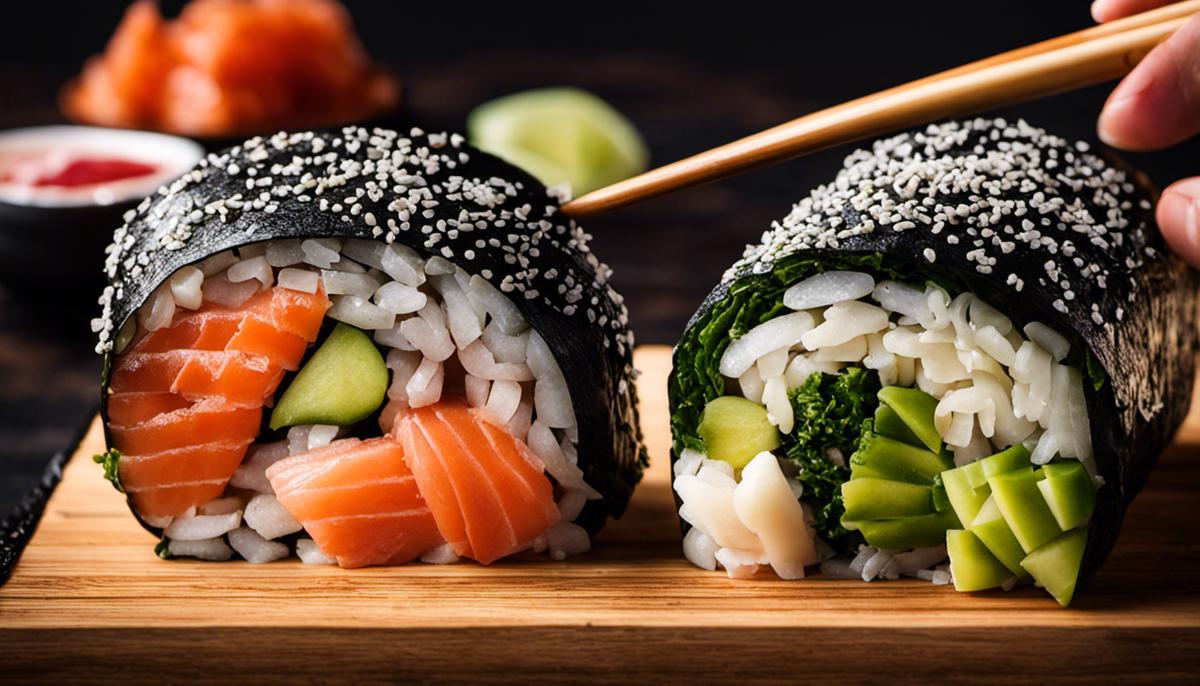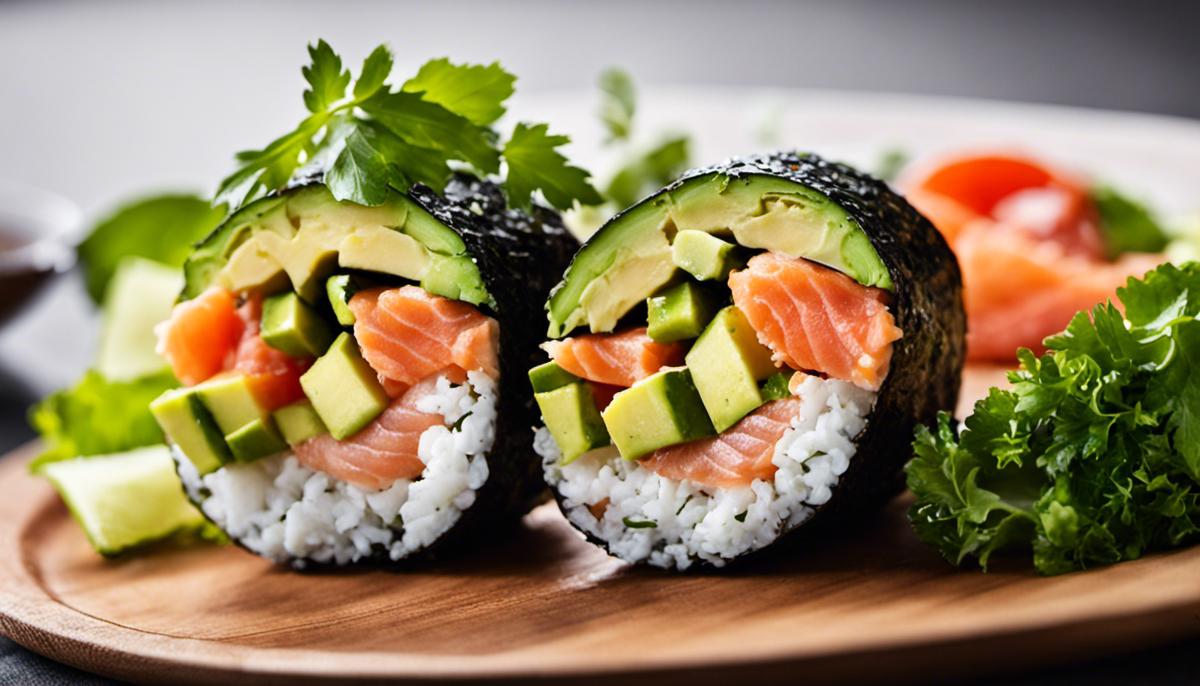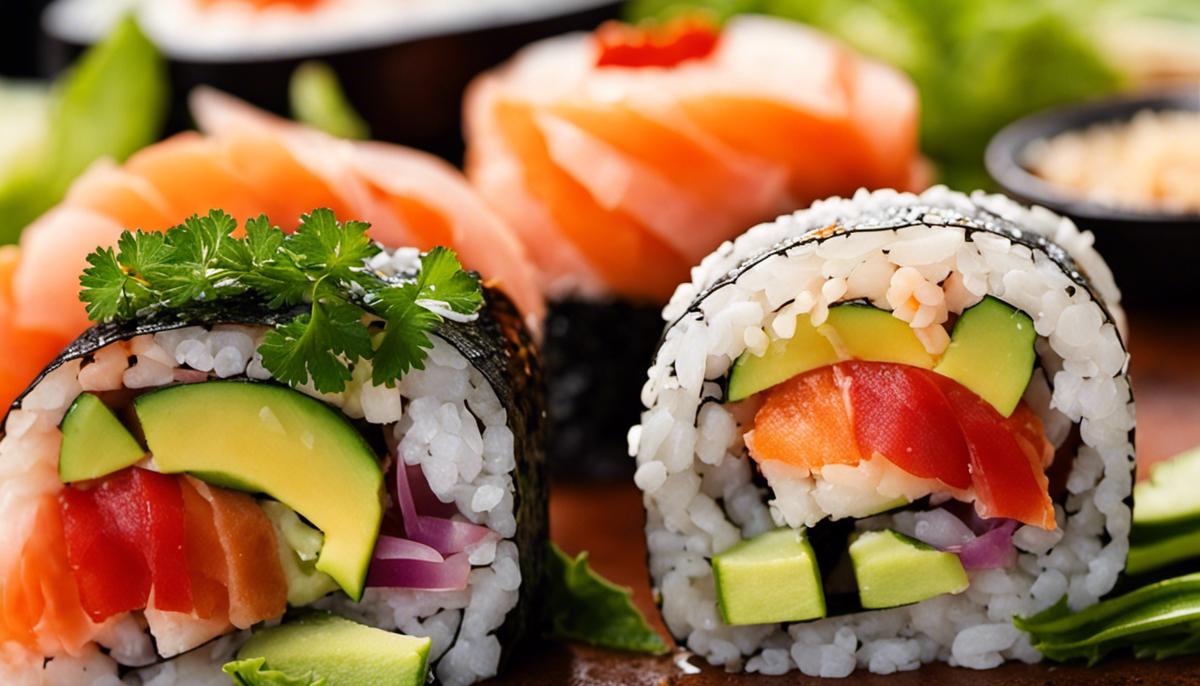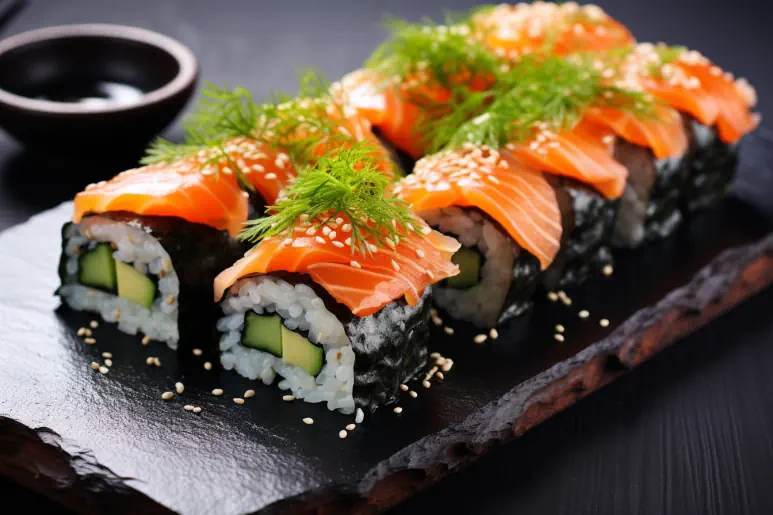In the dazzling world of culinary arts, the art of sushi preparation is a special delicacy that requires a masterful combination of skill, precision and attention to detail. Particularly interesting in this diverse range of delicacies are the Inside-Out Sushi Rolls. They are not only a delight for the eyes and the palate, but also a shining example of the infinite possibilities of flavor composition. This special form of sushi creation requires that extra bit of skill, knowledge and creativity to create the edible proof that true cooking lies in the ability to add a whole new dimension to conventional dishes.
The Art of Making Inside-Out Rolls
In the fascinating world of sushi, the secret to a perfect inside-out roll lies deep in the use of artful techniques and essential tools. For a proper, traditionally constructed inside-out roll, both masterfully developed techniques and certain tools are an absolute necessity.
The first and arguably the most basic technique is the preparation of the sushi rice. It is crucial for the production of inside-out rolls, as they form the outer layer of the rolls. The rice must be washed, cooked and seasoned in the right way using specific techniques so that it gets the perfect sticky texture and unique taste.
- A makisu, often referred to as a bamboo mat, is an indispensable tool in the production of sushi. It plays a crucial role in forming the inside-out rolls, ensuring that the rolls are uniform and do not fall apart. Using this mat requires patience and care, but with practice, you can learn to shape firm and beautiful inside-out rolls.
For optimal rice handling and to achieve the moisturizing effect necessary to shape the rolls, it is recommended to use Tezu. This is a liquid made from a mixture of water and vinegar that prevents the rice from sticking to your hands.
- Nori sheets are the basic element that envelops the fillings and forms the internal structure of each sushi roll. The technique of handling nori requires care and accuracy, as the sheet must be perfectly aligned with the bamboo mat.
- Using a sharp knife, ideally a special sushi knife, is crucial when cutting sushi rolls. Proper pruning helps maintain structure and ensures that the final product tastes both appealing and delicious!
But despite all the technology and all the aids, the secret of a perfect inside-out roll lies in the heart of the sushi master: in the love of the ingredients, the care in the preparation and in the pure enjoyment of the food. After all, that’s what each of us is looking for in the first place: a culinary experience that combines taste, texture, aesthetics and enjoyment.

The Role of Ingredients
Key Ingredients for an Irresistible Inside-Out Roll
It’s no secret that making sushi creations is more than just a culinary engagement – it’s an art form. One such masterpiece is the inside-out roll, an upside-down version of the traditional sushi roll, where the rice is on the outside and the filling is on the inside. But what are the crucial ingredients that make this dish special and how do they affect the final product?
One of the first things you notice when you think of inside-out rolls is the brilliant glaze on the rice. This glossy coating comes from a mixture of sugar, salt, and rice vinegar called sushizu. The exact balance of these three ingredients is crucial for creating the right acidity, sweetness, and saltiness, making for the perfect flavor and texture combination.
The filling inside the roll is what makes the fabulous variety of the different inside-out rolls. This can be fresh seafood such as tuna or salmon, crunchy vegetables or creamy avocado. Keep in mind that these ingredients should be top-notch, as the quality of the filling can make the difference between an ordinary roll and an exceptional one.
Another essential element is the excellent knack for printing. The challenge is to apply the right amount of pressure to hold the rolls together tightly enough without crushing the rice or forcing the ingredients out of the roll. A gentle yet determined hand gesture is key here.
Sesame seeds, which are often sprinkled on the outside of the roll, not only provide an extra visual appeal, but also deliver a nutty texture and subtle flavor that enhances the overall taste experience.
Finally, the use of fresh wasabi and ginger is indispensable. The pungent yet earthy wasabi perfectly complements the richness of the sushi, while the pickled ginger helps cleanse the palate so that each piece tastes exactly as it should.
Each of these ingredients plays a crucial role in shaping the overarching taste experience that inside-out rolls provide. With the right application, one can release the subtle layers of flavor that make these rolls truly irresistible. Because, as with any culinary creation, food is more than the sum of its parts – it’s the passion, care, and joy that goes into each piece.

The History of Inside-Out Rolls
The inside-out roll, known as Uramaki in the Land of the Rising Sun, has an exciting origin. While many may immediately think of Japan, the actual origin of this innovative sushi variation is anchored in the United States of America. In Los Angeles, California, in the early 1960s, to be precise. At a time when Californian cuisine was beginning to shake up the culinary world and set new standards.
The Inside-Out Roll was created by creative sushi chef Machita Ichiro, who noticed noticeable discomfort among his guests when they looked directly at the nori sheet. This showed him that the Western preference for the visually appealing food produced an aversion to the dark green kelp leaves. To win over the Western palate to sushi, he unceremoniously flipped the traditional sushi rolls and hid the nori under a layer of delicious sushi rice treated with sushizu. Covered with sesame seeds or sometimes fish roe, the uramaki was born.
Over the years, the popularity of the inside-out roll has steadily increased – from the California coast to global recognition in hip sushi restaurants and bars around the world. The enthusiasm for this innovative approach to sushi preparation has revolutionized the industry and opened up a new game of creativity and culinary freedom.
Today, the inside-out roll is the star of many sushi menus, available in a variety of variations, ranging from crispy tempura filling and tender avocado slices to exotic toppings such as fresh mango pieces and truffle oil. It has even managed to be in the spotlight of gourmet restaurants and has been transformed into innovative taste experiences by numerous renowned chefs.
Ultimately, the true beauty of the inside-out roll lies in its ability to transform. It is a testament to how skillful adaptation and careful innovation can increase the fascination and enjoyment of culinary diversity. A delicious ambassador of versatility and creativity, constantly pushing the art of food and breaking the boundaries of tradition. The Inside-Out Roll is a perfect example of how food is much more than mere food intake – it’s a constant play on tastes and textures, a language that connects us all. And without a doubt, this unique sushi variant will conquer the hearts of gourmets and sushi novices alike for many years to come.

The Inside-Out Sushi Rolls are therefore much more than a simple meal. They are a manifestation of cultural fusion, a monument to innovation and creativity, and proof that a deep understanding and appreciation for the finest ingredients can lead to an extraordinary culinary feat. The elaborate art of inside-out sushi therefore not only unfolds the treasures of the sea for our palate, but also embodies the unifying spirit of global cuisine. So let’s continue the journey, get inspired and strive to create the best possible inside-out sushi. Because true cooking is not just a question of craftsmanship, but a question of passion.


